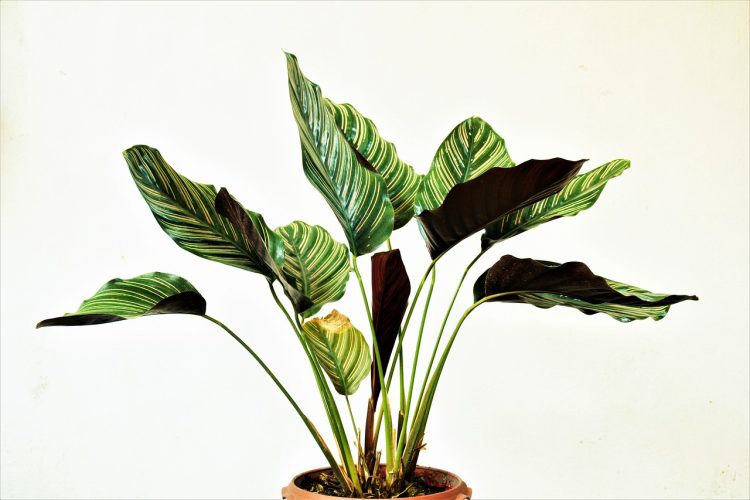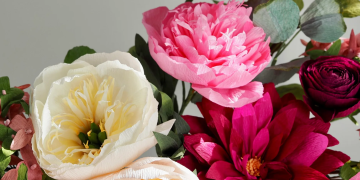Biophilic design is all about connecting your living space to the natural world. In a time when many of us spend much of our days indoors, bringing nature into our homes is not only aesthetically pleasing but also beneficial for our well-being. Biophilic design can help reduce stress, enhance creativity, and promote a sense of calm. By incorporating natural elements, textures, and organic forms into your home, you can create a space that nurtures both body and mind. Here are some practical ways to incorporate biophilic design into your home and transform your indoor environment into a natural sanctuary.
Embrace Natural Light
Natural light is one of the most fundamental elements of biophilic design. Sunlight provides a sense of connection to the outdoors, helps regulate our circadian rhythm, and improves overall mood and well-being. To maximize natural light, make sure to keep your windows unobstructed and use sheer curtains that allow daylight to filter through while maintaining privacy.
Consider arranging your furniture to take advantage of the natural light sources in your home. Position workspaces, reading areas, or seating arrangements near windows to make the most of natural light throughout the day. If your space lacks natural light, consider using full-spectrum light bulbs that mimic daylight to create a similar effect and maintain a bright and airy atmosphere.
Skylights are another great way to bring more natural light into your home, especially in areas that may not have access to traditional windows, such as bathrooms or hallways. Skylights allow for an abundance of light without sacrificing privacy, creating an open and inviting environment.
Integrate Indoor Plants
Indoor plants are perhaps the most obvious and effective way to incorporate biophilic design into your home. Not only do plants help purify the air, but they also provide a natural, living element that makes a space feel more alive and vibrant. Consider adding a variety of plants with different shapes, colors, and sizes to create visual interest and texture.
Tall plants, such as fiddle leaf figs or palms, can add a dramatic touch to living rooms or entryways, while smaller plants like succulents, ferns, and spider plants are perfect for shelves, countertops, and side tables. Hanging planters and wall-mounted plant holders are great for adding greenery without taking up valuable floor space. You can also create a dedicated “plant corner” with a collection of different potted plants to bring an abundance of nature indoors.
In addition to potted plants, consider incorporating herbs into your kitchen space. Fresh herbs like basil, mint, and rosemary are not only functional for cooking but also bring a pleasant fragrance and sense of greenery to your kitchen environment.
Use Natural Materials
Natural materials are essential for creating an authentic biophilic design. Materials such as wood, stone, bamboo, and natural textiles add texture, warmth, and a sense of organic beauty to a space. Opt for wooden furniture, stone countertops, and woven rugs to add an earthy touch to your home.
Reclaimed wood is an excellent choice for biophilic design, as it not only adds character and history but is also a sustainable option. Consider incorporating reclaimed wood into furniture pieces like tables, shelving, or even accent walls. Stone and brick elements can also be used to add a natural, grounding element to your home, whether as a feature wall, fireplace, or kitchen backsplash.
For textiles, choose natural fabrics such as linen, cotton, or wool. These materials not only feel more comfortable but also contribute to a sense of warmth and connection to nature. Woven baskets, jute rugs, and wool throws are all great options for adding natural textures and enhancing the biophilic feel of your home.
Incorporate Water Elements
Water is a powerful symbol of tranquility and has a soothing effect on the mind and body. Incorporating water elements into your home can help create a calming atmosphere and enhance the biophilic design. Indoor water features, such as small fountains or tabletop water features, are a great way to introduce the sound and movement of water into your space.
If space allows, consider adding a fish tank or an indoor pond. These elements not only add the visual beauty of water but also introduce aquatic plants and animals, further deepening the connection to nature. The gentle sound of flowing water can create a peaceful ambiance and help drown out background noise, making your home feel more serene.
Create Visual Connections to Nature
Biophilic design is about creating a visual connection to the natural world, even when you are indoors. Large windows that provide unobstructed views of gardens, trees, or other natural landscapes can help create a seamless connection between the indoors and outdoors. If you live in an area with beautiful natural scenery, consider installing floor-to-ceiling windows or sliding glass doors to maximize your view.
If your home doesn’t have direct views of nature, you can create a similar effect by incorporating nature-inspired artwork or photography. Images of landscapes, forests, or ocean scenes can evoke the feeling of being outdoors and enhance the biophilic atmosphere of your home. You can also use nature-themed wallpaper to add a touch of greenery and create a visual focal point.
Mirrors are another effective tool for creating visual connections to nature. By strategically placing mirrors opposite windows, you can reflect natural views and light, making your space feel larger and more connected to the outdoors.
Incorporate Organic Shapes and Patterns
Biophilic design often incorporates organic shapes and patterns that mimic those found in nature. Instead of straight lines and sharp edges, consider using furniture and decor that feature curved, flowing lines. Rounded tables, arched doorways, and soft, sculptural seating can all contribute to a more natural and inviting space.
Patterns that are inspired by nature, such as leaf motifs, floral prints, or fractal patterns, can be used to add visual interest to your home. These patterns can be incorporated through textiles like throw pillows, curtains, or area rugs, as well as through decorative elements like wall art or ceramics. The key is to choose patterns that evoke the natural world and create a sense of harmony and tranquility.
Use Natural Color Palettes
The colors you choose for your home can have a significant impact on how connected you feel to nature. Natural color palettes, inspired by the earth, sky, and greenery, are ideal for biophilic design. Colors such as soft greens, warm browns, sandy beiges, and sky blues can all help create a calming and grounded atmosphere.
Consider painting your walls in neutral, earthy tones, and use accent colors inspired by nature to bring the space to life. For example, shades of green can be used to evoke the feeling of being surrounded by lush foliage, while blues can bring a sense of calm reminiscent of the sky or water. The goal is to create a color palette that feels balanced, natural, and soothing.
Maximize Ventilation and Fresh Air
Fresh air is an essential component of biophilic design, as it helps create a healthier and more comfortable indoor environment. Whenever possible, open windows to allow fresh air to circulate throughout your home. This not only improves indoor air quality but also helps bring in the scents and sounds of nature, further enhancing the connection to the outdoors.
If opening windows isn’t always an option, consider using air purifiers or adding plants that help filter the air. Certain indoor plants, such as snake plants, peace lilies, and pothos, are known for their air-purifying properties and can help keep your indoor environment fresh and clean.
Design Outdoor Spaces
Biophilic design extends beyond the walls of your home—creating outdoor spaces where you can relax and connect with nature is equally important. Whether you have a small balcony, a patio, or a spacious backyard, consider designing an outdoor area where you can unwind and enjoy the natural environment.
Add comfortable seating, potted plants, and natural materials to create an inviting outdoor space. A small garden, water feature, or even a vertical garden can help enhance the biophilic feel. Creating a seamless flow between your indoor and outdoor spaces will further strengthen your connection to nature and provide a peaceful retreat from the stresses of daily life.
Biophilic design is about more than just aesthetics—it’s about creating a home that nurtures your physical and mental well-being by connecting you to the natural world. By incorporating natural light, indoor plants, organic materials, and elements like water and fresh air, you can transform your home into a calming, rejuvenating sanctuary that celebrates the beauty of nature.










